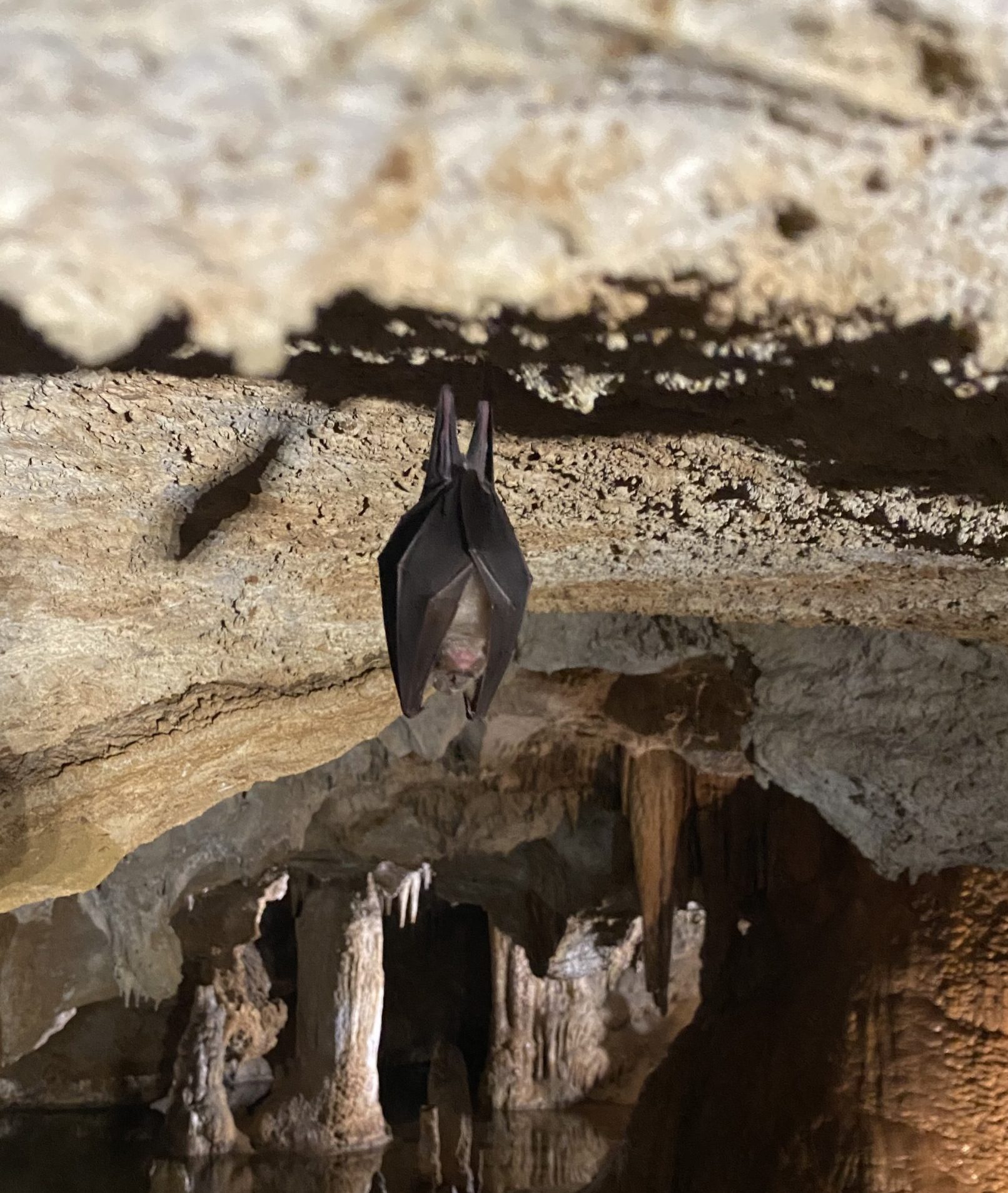One of the first things that comes to mind when we mention caves is bats. The thought of a sudden encounter with a bat usually causes discomfort in people, mostly because we know so little about them. However, if we were to learn a bit more about these exceptionally mystical creatures, we would realize there were more reasons for admiration than for fear.
1. Bats are the only flying mammals in the world. Their wings are made of long thin bones that are actually fingers covered with thin layers of skin that extend down to their legs. Although there are flying squirrels among mammals, their wings only help them glide. Bats on the other hand have an amazing flying technique and they take off from their famous upside-down position.
2. Bats and cats have a common feature. Bats spend a lot of time cleaning themselves and they do it just like cats. Cleaning helps them control parasites and it makes their fur silky and shiny.
3. There are over 1300 bat species in the world. They inhabit almost every part of the world, with the exception of extremely hot or extremely cold regions. Their colonies are so vast that they make a quarter of all mammals on earth.
4. Bats hold several world records. Apart from being the only flying mammals, recent research has shown that the Brazilian Free-Tailed Bat is the fastest mammal on Earth. The females, which weigh about 12 grams, can develop a speed of 160kph. Also, the smallest mammal on Earth is a bat living in the caves of Thailand and Burma. It is between two and three centimeters long and weighs only two grams. This bat buzzes through the air like a flying insect which is why it is known as the bumblebee bat.
5. Bats can locate food in complete darkness. Most bats are nocturnal and they hunt in the dark. However, it doesn’t suggest that they are blind, but rather that they cannot rely on their sight under such conditions.
Bats produce soundwaves at frequencies above human hearing, i.e. inaudible high-pitched sounds and create an image of their surroundings thanks to their echoes. This process is called echolocation.
6. Flying fox is the largest among bats. This bat’s wingspan reaches a length of 1,5 meters. It lives on South Pacific islands, and in Australia it even roosts in the parks of urban environments. Flying fox feeds on fruit and nectar. Unlike the bats that rely on echolocation in the quest for food, the flying fox, being that it eats fruit, relies mainly on its sight.
7. Bats are the only pollinators for certain plants. Banana, avocado, and mango are among them. Apart from being pollinators, bats also spread the seeds of certain nuts, figs, and cacao.
8. In one night, bats can eat up the amount of insects equal to their own weight. They can eat over a thousand mosquitoes within an hour. Seeing as they act as pest control, many people work on creating conditions for bats to gather in their gardens.
9. Various species of bats migrate to warmer environments during wintertime. The reason for migration lies in the fact that the number of insects severely drops during winter. The species that don’t migrate spend winters in hibernation.
10. Bracken Bat Cave is the summer home to the biggest bat colony in the world. Tens of millions of Brazilian Free-Tailed Bats inhabit this cave every year from March to October. Migrating from Mexico, they fly a distance of 1600km. Every night they leave the cave and cause an unusual air circulation while flapping their wings.
Our spelological object Lipa cave as a protected natural reserve of Montenegro is also home to bats, but they can be found only in deeper and completely dark channels. We seldom have the opportunity to greet them, but during the night they leave their droppings behind thus creating a home to many bacteria and fungi that develop in caves. These animals have been more actively studied in Montenegro for the past 15 years, and they have been protected by national law since 1982.
If you would like to find out more about bats that enrich the wild beauty of Montenegro, you can watch an episode of the show „Nature Is My Home“ created by National Parks of Montenegro in cooperation with the public broadcaster (RTCG).


